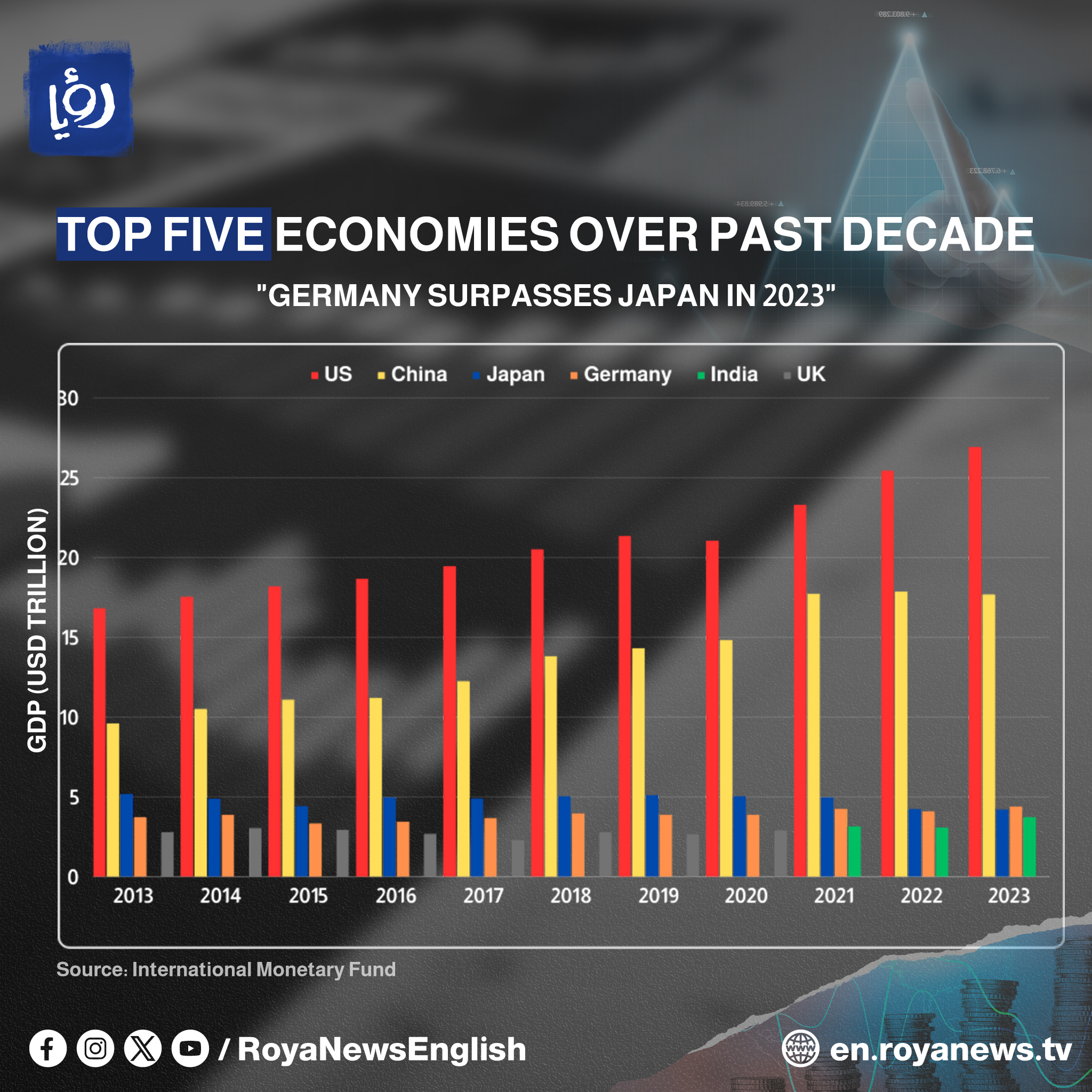Global economic landscape shifts, new players emerge
Published: 2024-02-18 10:16
Last Updated: 2024-04-27 04:56
Editor: Sara Al Faqir ،Baker Al Jaber
Germany surpassing Japan to become the world's third-largest economy signals fierce competition and fundamental changes in the global economic landscape over the past decade.
Since the beginning of the millennium, the world has witnessed radical shifts in the classification of countries on the scale of the largest global economies. This has been influenced by multiple factors including uneven economic growth among countries, financial crises, political transformations, and rapid technological advancements.
- The United States retains its lead -
Despite challenges and fluctuations, the United States maintained its position as the world's largest economy during the period under review, preserving its economy's relative size. Its Gross Domestic Product (GDP) ranged between USD 14.2 trillion (2009) and USD 26.94 trillion (2023).
- China’s rapid rise -
On the other hand, the Chinese economy witnessed a rapid rise. At the beginning of the millennium, China's economy was less than a quarter of the size of the US economy, while it currently surpasses it. In 2023, China's GDP reached USD 17.7 trillion, securing its position as the world's second-largest economy.
- Japan's decline, Germany regains third place -
Conversely, both Japan and Germany saw a decline in their positions among the largest economies. Despite maintaining their economic size with minimal growth, they experienced a decline in their rankings. Japan, which held the second position since the beginning of the millennium, fell to fourth place with an economy size of USD 4.2 trillion in 2023.
As for Germany, it maintained its third position for many years since the beginning of the millennium, losing it in 2008 before regaining it from Japan in 2023, becoming the third-largest economy in the world with a GDP of USD 4.5 trillion.
- Significant rise for India -
The Indian economy has witnessed significant growth in recent years, jumping from the tenth position at the beginning of the millennium to the fifth position in 2023, recording a GDP of USD 3.7 trillion.
- New players -
The current decade has seen the entry of new players into the list of the top ten economies in the world. Both Indonesia and Brazil succeeded in occupying the tenth position during recent years.
- Rise of Asian economies redefines rankings -
Compared to the year 2000, there has been a fundamental change in the structure of the top ten global economies. At the beginning of the millennium, European countries and the United States represented the vast majority of the list, but now prominent Asian players like China and India have joined, along with the emergence of new economic powers such as Indonesia and Brazil.
- Key factors behind shifts -
The shifts in the ranking of countries among the largest economies can be attributed to multiple factors, including rapid economic growth in countries like China and India compared to slow growth in other countries, technological developments that have contributed to the growth of new economic sectors and enabled some countries to benefit from them better, globalization and the liberalization of global trade leading to increased economic interdependence between countries, global financial crises negatively impacting some economies more than others, in addition to political and social transformations in some countries.
- BRICS -
The BRICS nations comprise significant global players like Brazil, Russia, India, China, South Africa. BRICS plays a significant role by uniting the primary emerging economies worldwide, representing 41 percent of the global population, accounting for 24 percent of the world GDP, and holding a share of over 16 percent in global trade. Over the years, BRICS nations have served as the primary drivers of global economic expansion.
- Future predictions -
It is expected that the shift in the structure of the world's largest economies will continue in the coming years, with China and India likely to see further growth.


